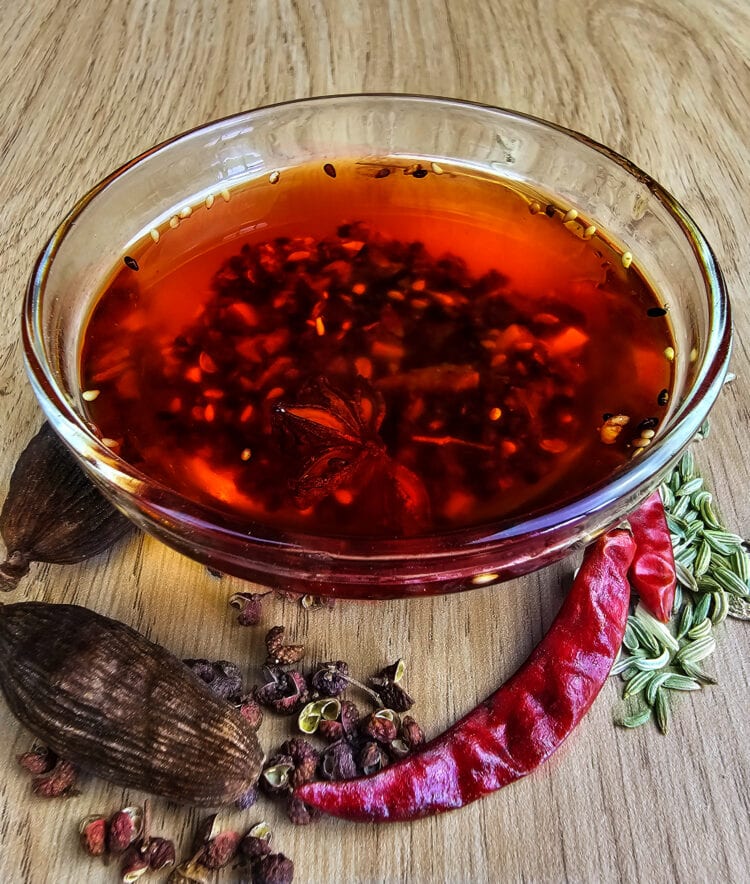Ah, Chinese chili oil—that mysterious and often misunderstood ingredient! Contrary to popular belief and the usual stereotypes, it’s not just there to set your mouth on fire or make you wince.
Of course it’s spicy, but reducing it to that alone is an oversimplification—and a deeply unfair one.
Its role goes far beyond heat; it adds real dimension to whatever it touches, lending depth and complexity that transcend ordinary flavors.
On social media, plenty of “chili oil” recipes go viral, often presented with deceptive simplicity—two or three ingredients, tops. Exclamations like “oh la la there’s garlic in it, the cloves look confit and it’s neon red, waaaaaaaaaaaaouw, pure kuuuuuiller” often accompany these posts. Good for the creators who enjoy that simplified version.

However, in my kitchen, chili oil is far more than just a colorful condiment.
The chili oil I make has a truly distinctive taste—a unique signature that sets it apart from commercial or simplified versions.
It’s the result of a carefully considered combination of ingredients: a delicate balance of heat, aromatics, and umami. It’s not just a hit of spice but an invitation to a culinary journey—an exploration of flavor that can turn an ordinary dish into an unforgettable experience. Unlike Japanese rayu, this one packs heat. Consider yourself warned. Try it in my Liang Pi noodles.
How to use Sichuan chili oil
My Sichuan noodles with MSG use it, as do my Dan Dan noodles. Honestly, drizzle it over almost any Asian dish—it’s just delicious.
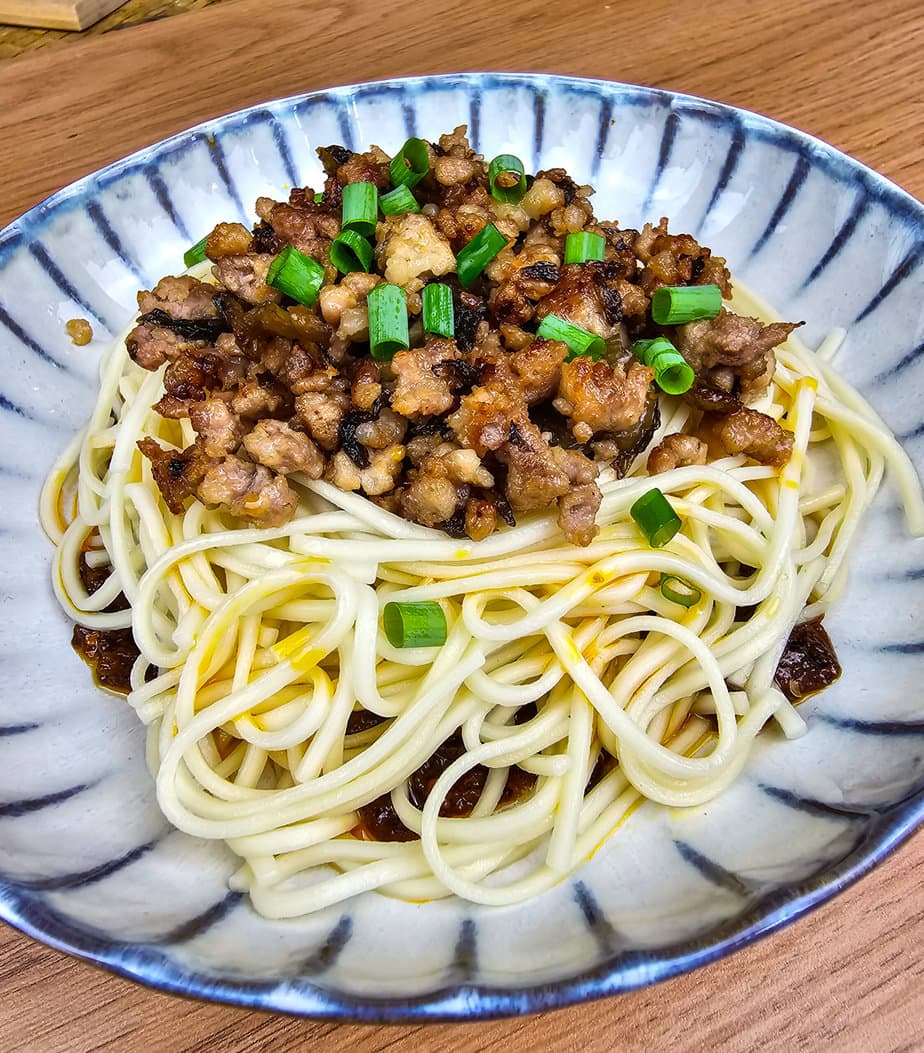
Why add the oil in three stages?
The technique called “yixiang erhong sanla” (一香二红三辣) is a traditional method for preparing Sichuan chili oil. As explained in a video by Chinese Cooking Demystified, it consists of three main steps:
- Yixiang (一香) – Fragrance: The first pour draws out the aroma of the chilies. It’s essential to pour the oil right into the center of the “volcano” of ingredients to maximize aroma.
- Erhong (二红) – Red Color: The second pour extracts the chilies’ red pigment, giving the oil its characteristic hue.
- Sanla (三辣) – Heat: The final pour releases the chilies’ heat, giving the oil its distinctive spiciness.
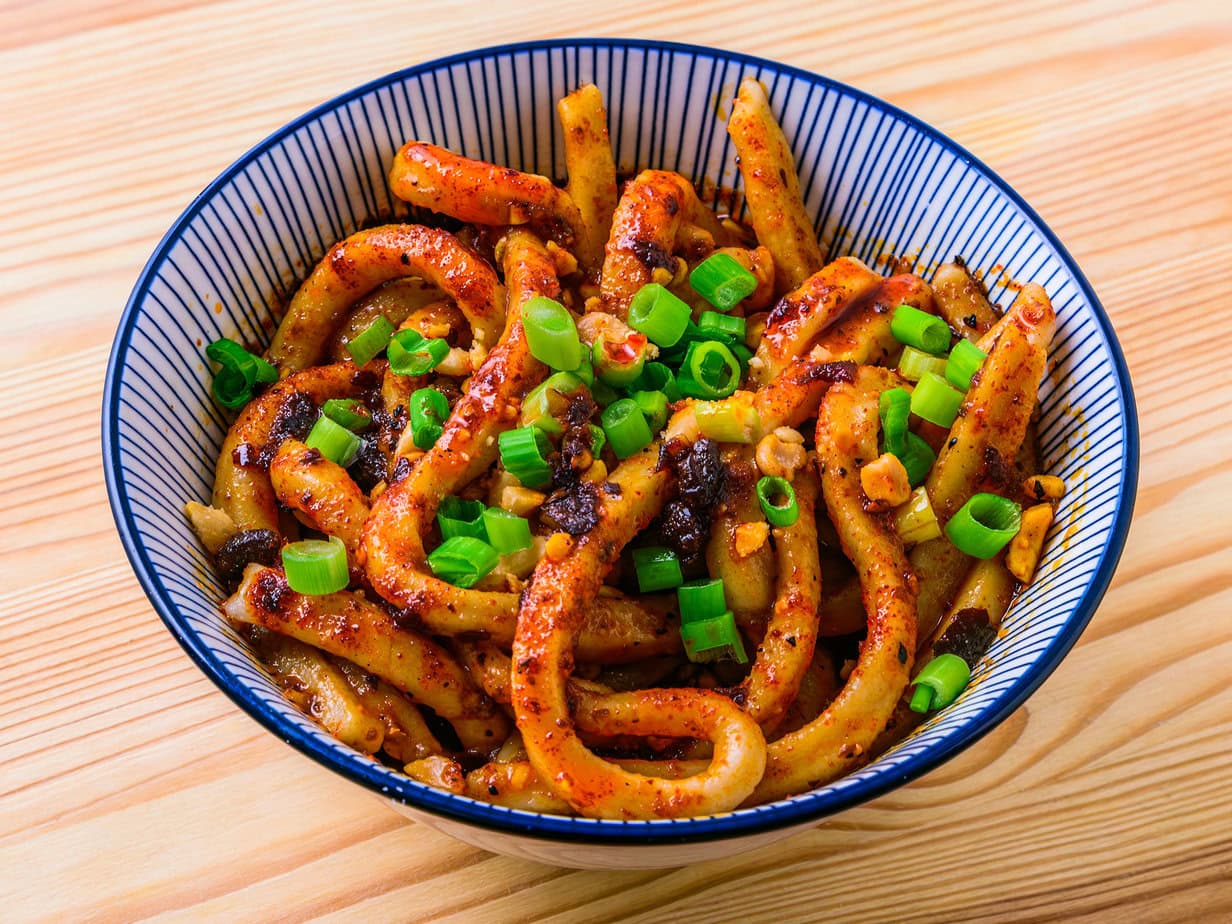
Key ingredients in Sichuan chili oil
- Dried chilies: They bring heat and spiciness. Common in many Asian cuisines, they add depth and intensity.
- Ground Sichuan pepper: This adds a unique, slightly lemony flavor with a signature tingling sensation. It’s essential in many Sichuanese dishes. You can substitute Sansho pepper.
- Light soy sauce: Adds depth and umami.
- Black rice vinegar: Provides gentle acidity and aromatic complexity. It has a richer, sweeter flavor than many other vinegars.
- Star anise: Lends a sweet, subtly spicy, licorice-like note. It’s often used in Chinese cooking to flavor dishes.
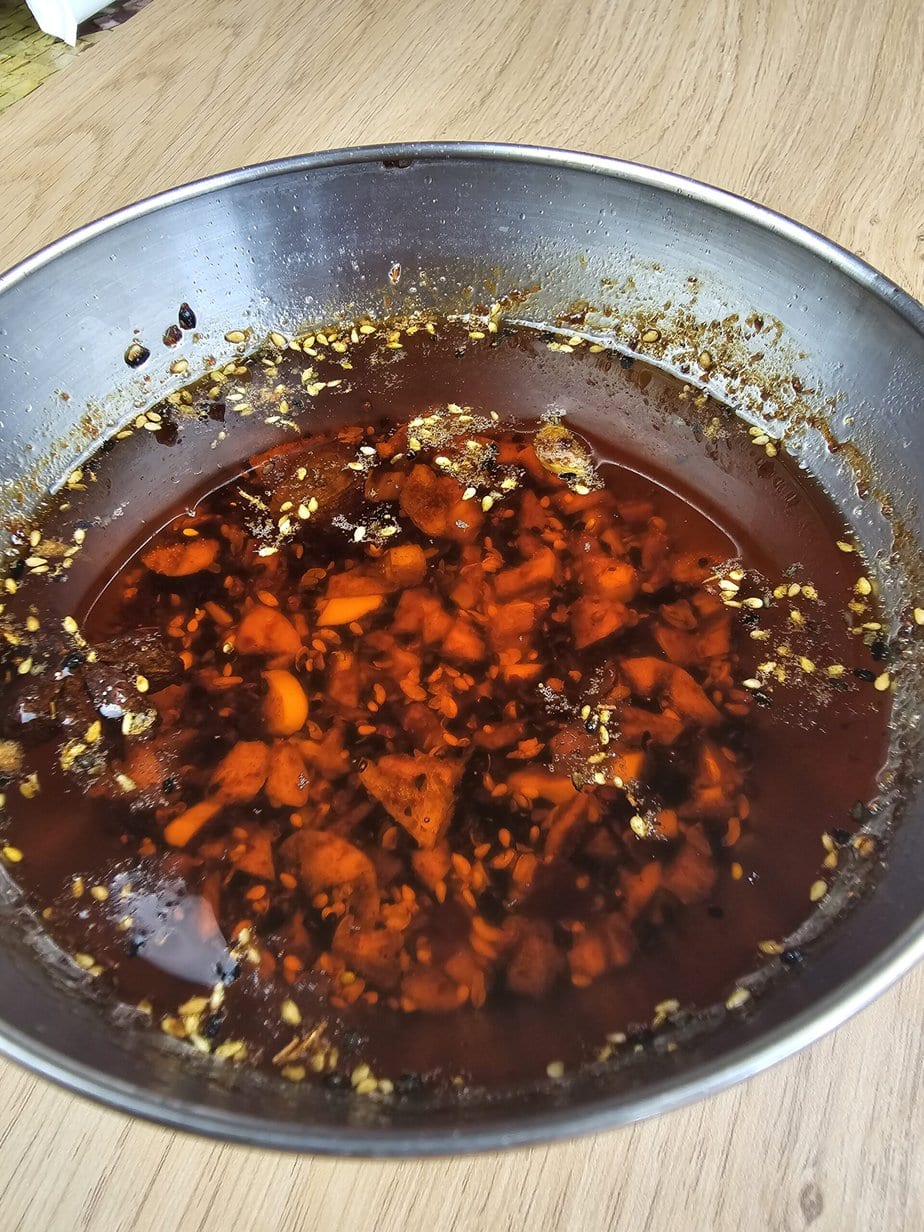
- Black cardamom pod: Brings a smoky, resinous note that adds depth and complexity.
- Fennel seeds: Add a sweet, anise-like flavor that balances stronger, spicier elements.
- Black sesame seeds: Offer a nutty flavor and a pleasant crunch. They’re also prized for their striking color.
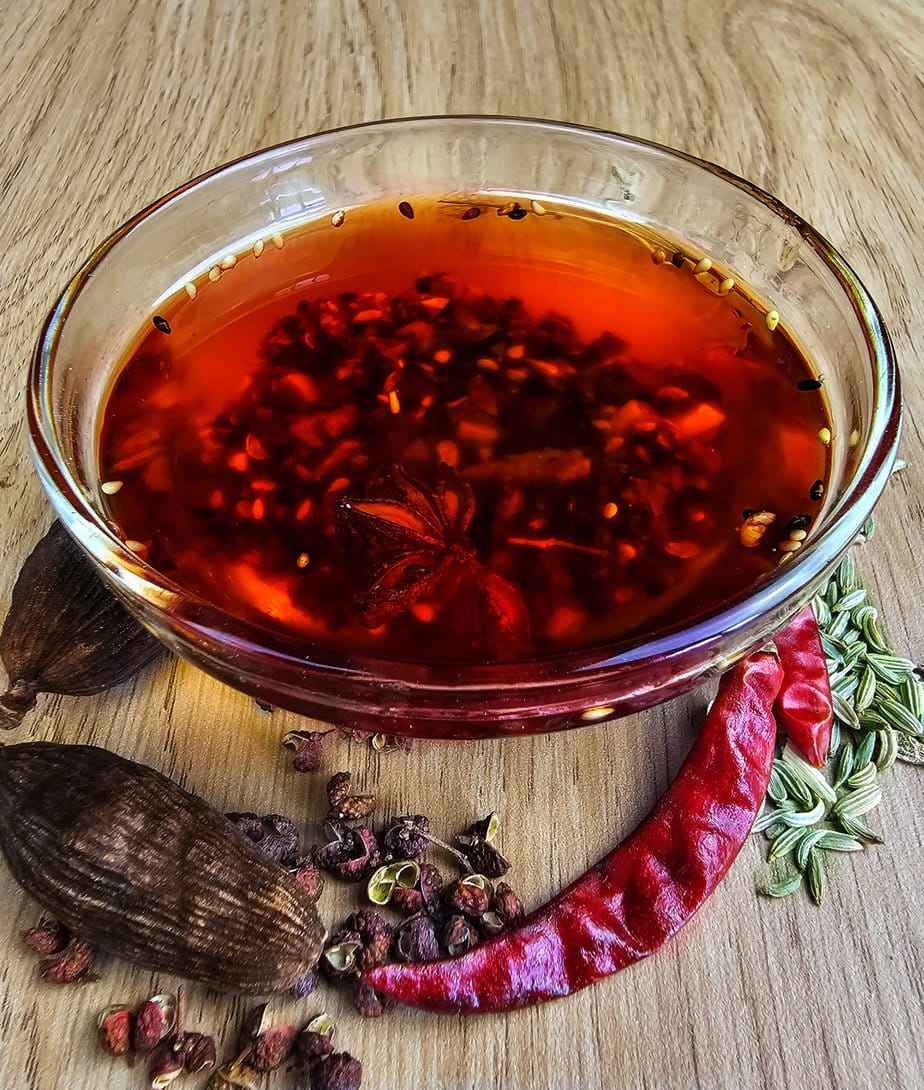
Ingredients
- 100 g dried chilies
- 400 ml neutral oil sunflower, corn, etc.
- 4 tablespoons ground Sichuan pepper
- 2 tablespoons light soy sauce
- 1 tablespoon black rice vinegar
- 1 teaspoon granulated sugar
- 1 teaspoon salt
Spice Mix
- 10 g sliced ginger
- 2 star anise
- 1 pod black cardamom pod, lightly crushed
- 2 teaspoons fennel seeds
- 1 tablespoon black sesame seeds
Instructions
- Heat a wok over low heat. Dry-toast the chilies for 1 minute, then deseed.
- In a blender or food processor, grind the chilies into a powder.
- In a dry wok over low heat, toast the cardamom, fennel seeds, sesame seeds, and star anise for 2 minutes. Set aside.
- Heat the oil in the wok to 130 degrees and infuse the ginger, star anise, cardamom, and fennel for about 3 minutes. Remove.
- Heat the oil to 190 degrees.
- In a bowl, combine the chili powder, Sichuan pepper, rice vinegar, salt, and sugar. Mound the mixture into a volcano shape, creating a well in the center.
- Turn off the heat and pour in half of the oil through the well of the “volcano,” stirring vigorously.
- Wait 7 minutes, then pour in half of the remaining oil.
- Wait another 5 minutes, then pour in the remaining oil.
- Let cool to room temperature, then refrigerate to infuse overnight.
- Transfer to a jar.
